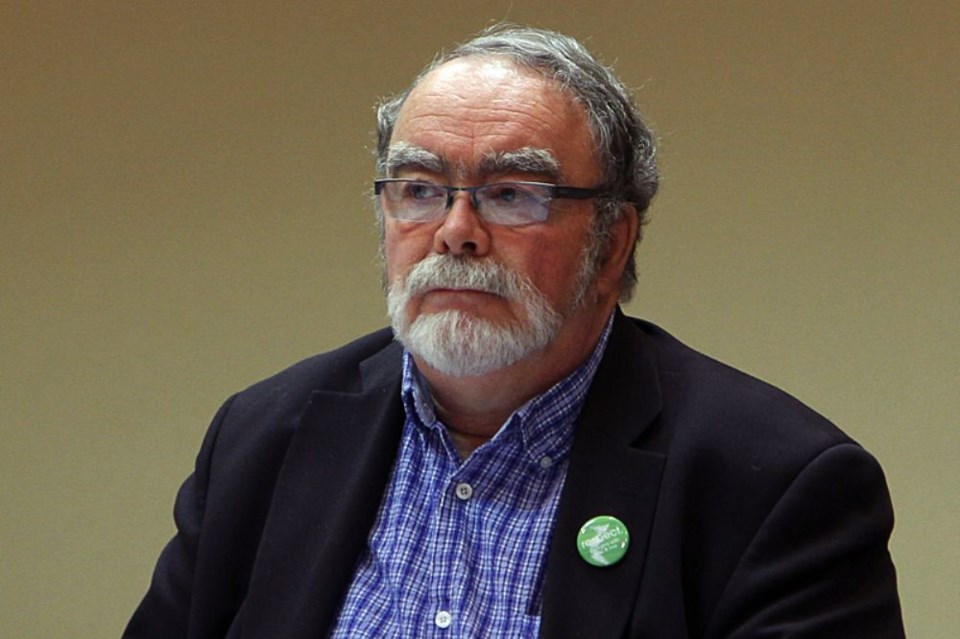THUNDER BAY -- Officials with the Northwestern Ontario Municipal Association say they will tentatively support pipeline transport of oil across the region, only if their provisions are met.
That was affirmed at a Tuesday board meeting, when representatives directed Common Voice Northwest Energy Taskforce co-chair Iain Angus to send documentation to the Ontario Energy Board outlining conditions that would need to be satisfied if the Energy East project is to be approved.
Those include how TransCanada Pipelines Inc. will protect significant waterways, ensure pipeline integrity and address potential safety concerns in their plans to convert a natural gas pipeline to transport crude.
“The protection of the environment as well as protection of the people is paramount in NOMA’s position and we want to do our best to convince Ontario first and then the National Energy Board that before this application is approved that a number of concrete assurances are given to the people of Northwestern Ontario,” Angus said in an interview during a break in the meeting.
Angus told the meeting this step will allow them to work more closely with TransCanada and have their concerns outlined early in the process. It also leaves NOMA better prepared to intervene in the process later.
One of NOMA’s most significant concerns is how waterways will be protected. Up to this point, TransCanada has not identified a specific definition as to what constitutes a “significant water crossing.”
Angus said there are a number of factors that affect whether a waterway is significant such as width of the crossing, rate of water flow, impact on wildlife habitats, and potential downstream effects.
“All of those things need to be taken into consideration and probably in the end it’s not a one size fits all definition,” he said.
Common Voice Northwest is also applying to the National Energy Board for funding to hold consultations with stakeholders across the region, including municipalities, First Nations and conservation groups.
Thunder Bay Mayor Keith Hobbs, who originally voted against a preliminary resolution regarding the pipeline at a NOMA meeting last year, said he will continue to oppose the pipeline conversion unless there is a firm assurance waterways will be protected.
He also wants to know what will happen if a spill occurs, and cites the example of a 2010 pipeline burst in Michigan’s Kalamazoo River which resulted in an estimated $767 million cleanup bill.
“It has to be a safe pipeline. You’re using an old natural gas pipeline and converting it so right off the bat I’m skeptical,” he said.
NOMA president Dave Canfield expressed concern about the prospects of 4,400 trucks per day moving oil on regional highways, as well as safety concerns about rail transportation.
There have been a number of instances where rail and truck transport has resulted in significant spills.
He acknowledged the oil is going to move, it’s about ensuring it happens in the safest manner.
“These are the requirements you will meet or you will not have our support,” Canfield said. “The only way we’ll support it is if they meet all the provisions of this document.”
Angus said there is a history of mishaps in the region in transporting oil through both rail and highways. Increasing the frequency and amount of product moved across both of those avenues is not the way to go.
“Our highways are not as safe as they could be so we need to make sure we’re not forcing the existing producers to move their product by truck,” Angus said.
“We don’t want to see those additional cars coming along the CP line, which parallels the TransCanada (Highway), or CN’s northern line through Sioux Lookout, Armstrong and other communities putting those residents at further risk from accidents.”
Another concern raised was about the response that would be triggered in the event of a spill. It was argued waiting for a response team to arrive from outside the region could be too late to limit the potential environmental damage.
Angus said he’s in favour of rapid response team based in Northwestern Ontario, with a solution as simple as having a trained group of emergency responders prepared to act in case of emergency.
